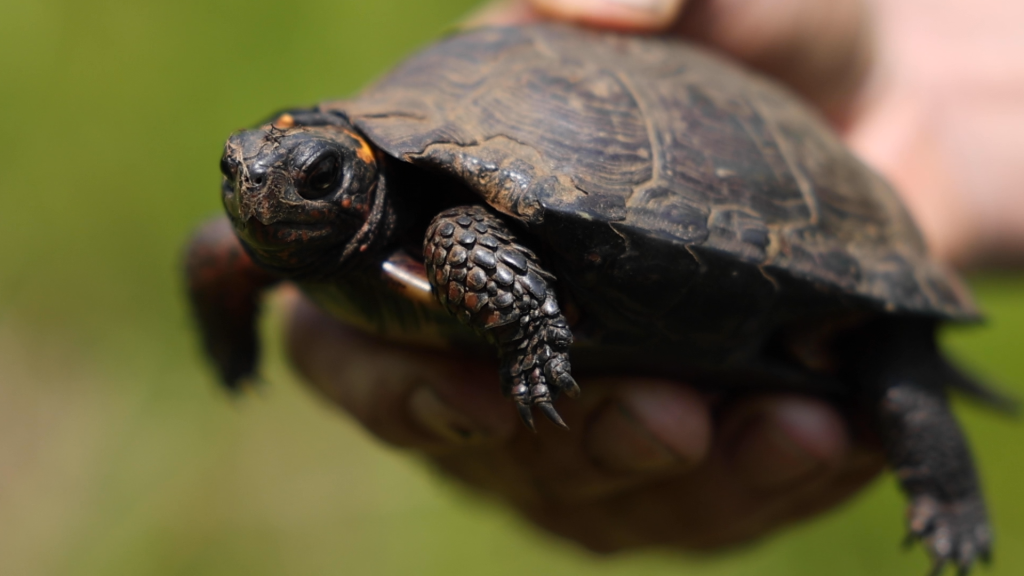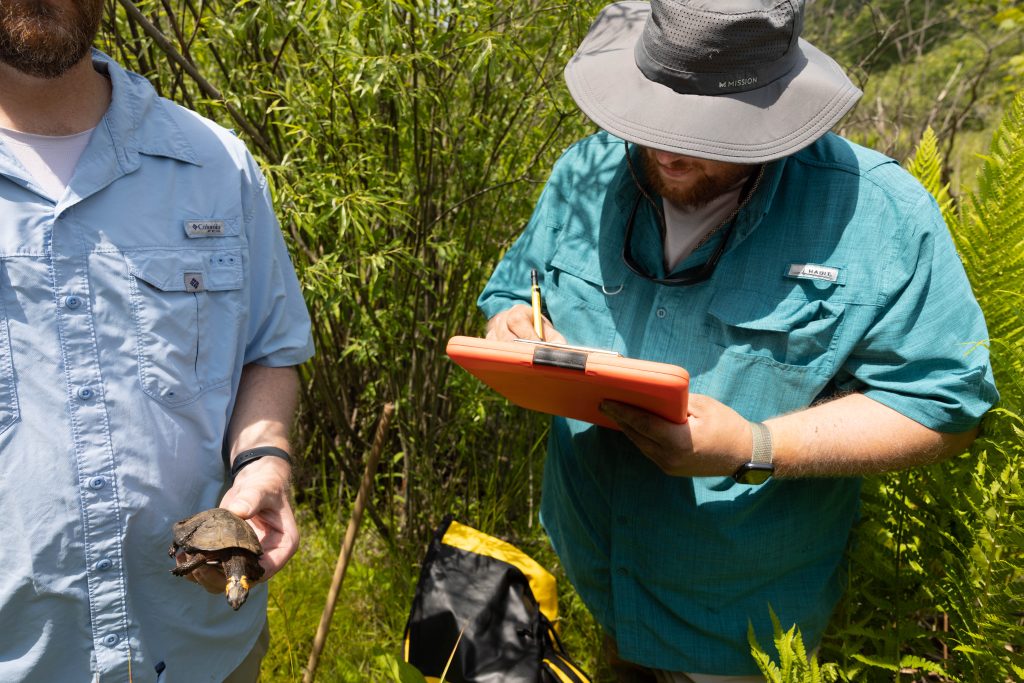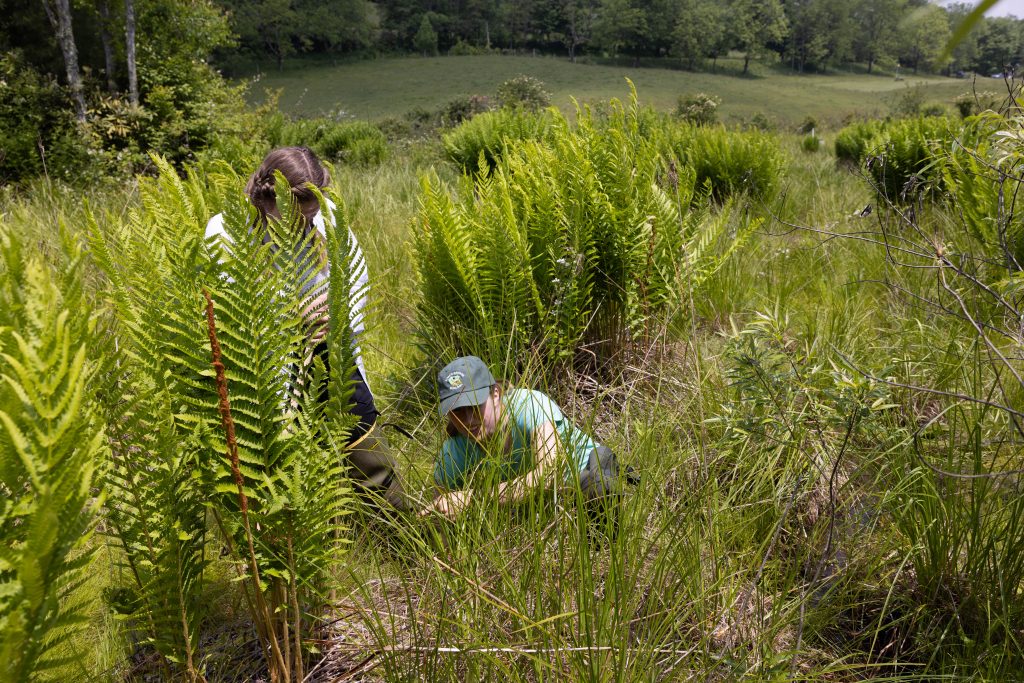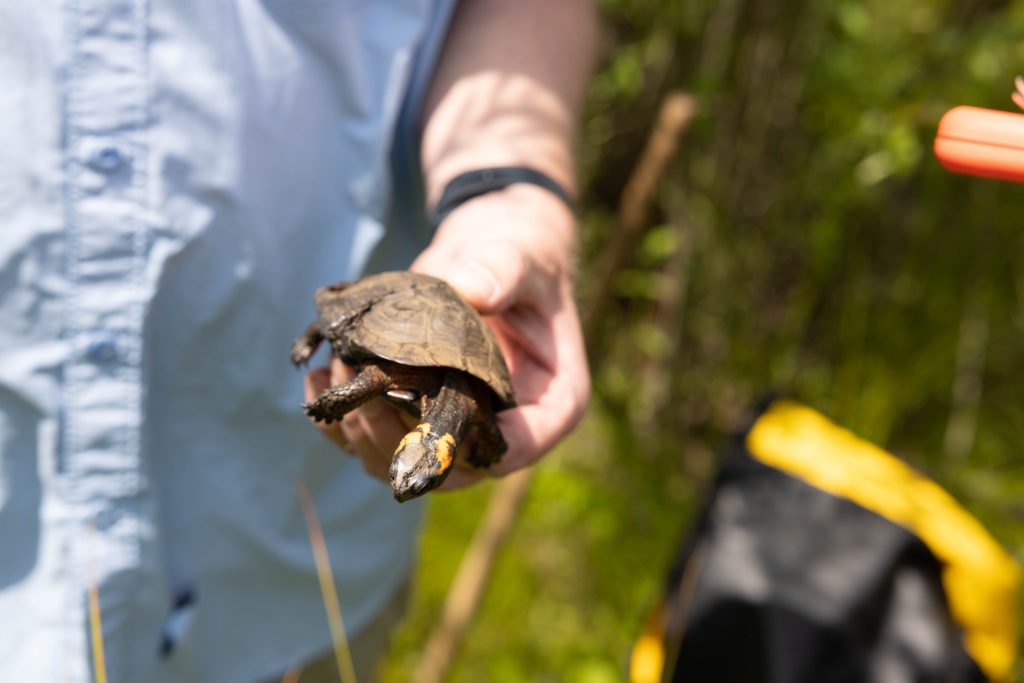
A Day in the Bog with Zoo Knoxville’s Herpetology Team
Written By: Scarlett Rockhold, Communications Manager at Zoo Knoxville
I recently got the opportunity to work alongside members of our Zoo Knoxville herpetology team in the field. While I’m excited to share with you my experience, I must first preface that I will need to leave some details out, and there is a reason for this.
Zoo Knoxville’s Program to Save Bog Turtles
Since 1986, Zoo Knoxville has been playing a major role in the survival of a critically endangered turtle species, the bog turtle, here in Tennessee. Bog turtles are one of the smallest turtle species in the world and are threatened by extinction due to habitat loss, illegal trafficking, and predation.
The late herpetologist from Zoo Knoxville, Bern Tryon, along with other turtle conservationists, made the bog turtle discovery in Tennessee back in May of 1986. Besides beginning a project to better understand these turtles in the wild, Bern also initiated a captive breeding program to eventually head-start and release turtles bred at the zoo to be returned to the wild. Once those turtles hatch, the herpetologists nurture the turtles and keep them active throughout the winter instead of allowing the offspring to hibernate like they would normally in the wild. This head-start allows the turtles to be significantly larger than their same aged wild counterparts, before releasing them back into the wild.
When the turtles leave Zoo Knoxville at around 9 months old, they are already the size of a 3-year-old bog turtle in order to be able to fend for themselves in nature. Allowing these turtles to grow in size before they are reintroduced, helps protect them from being eaten by predators. While predators are a normal component of the natural world, in bogs due to their proximity to people, many predators such as raccoons and skunks are found in greater abundance then they would be in a truly natural state.
The program has been in place now for over 37 years and more than 180 bog turtles have been hatched at Zoo Knoxville and reintroduced back into the wild. In order to measure the success of the head-starting program, we complete a variety of survey methods to better understand the population. This year with support from a grant supplied by TWRA, we looked for turtles every day for 21 days straight during the month of June. This year Stephen Nelson, Herpetology Conservation Manager at Zoo Knoxville oversaw this assignment. Each day Stephen put on his hip waders and trudged through the bog, and for one day I got to join him.
Why Leave Out Details
It is critical that the location of the bogs where these turtles are released remain a secret because of illegal trafficking, and Zoo Knoxville is dedicated to preventing these turtles from entering the illegal pet trade. This is why I will not be able to reveal the location of the bog and why I won’t be able to give too much detail about some of the devices used to aid us in our survey methods of the turtles.
A Day in the Bog
Bogs are mossy wetlands and difficult to navigate. I learned this the hard way. Putting on hip waders should have been an indication of how demanding a day in the bog would be. Within 5 minutes of walking through the bog and only stepping in the mucky areas to avoid stepping on potential nests, I was stuck. I had stepped in a deep spot in the bog, and it was as if I had stepped in quicksand. After some coaching from Stephen, I was able to get free, but it was not an easy task.
We spent four hours in the bog that day, and it was incredibly physically demanding. By the time we had finished for the day, I felt like I had completed a marathon. I knew Stephen would be visiting the bog for 21 days in a row, but I had no idea how challenging of an experience it would be for him each day.
To count the bog turtles, traps are set throughout the bog that stretches for several miles. The bog must be checked every day, so the turtles don’t stay in the traps for over 24 hours. In addition to the traps, Zoo Knoxville tried something new this year. Our team placed cameras in the bog so that they could obtain a more accurate count of these shy and elusive turtles. As turtles walked by the camera, a photo would be taken and analyzed later.
How Turtles are Identified
Stephen is able identify each turtle in the traps or captured in the photos by notches that were strategically filed into the turtle shells to create an identity for each turtle. These notches are harmless to the turtles and are much like filing fingernails for humans.
As we carefully navigated the mucky terrain checking traps along the way, we also kept an eye out for turtles buried in the muck. While all the traps were empty during my visit to the bog, we did happen to find three turtles that day. All three turtles were a part of the head-starting program, but one of the turtles had an even greater success story.
A Rehabilitation Success
This success story started years ago when zoo staff came across a bog turtle that had been badly injured. Her shell had been crushed after she was stepped on by a cow. She was brought to the zoo to be rehabilitated. Once our herpetologists felt that she was ready to return to her home in the bog she was rereleased. Since her return, not only has she survived for years, but she has also bred multiple times playing a key role in the survival of her species.
Join the Mission
The staff at Zoo Knoxville cares for animals that reside at the zoo daily, but my day in the bog allowed me a glimpse into the conservation work that takes place outside of the zoo.
I invite you to join us in our conservation mission. There are several ways to get involved. Check out the link below to learn more about how you can join us in our mission to save wildlife and wild places!
Join the Mission


